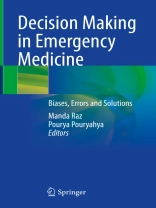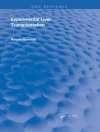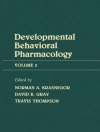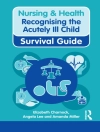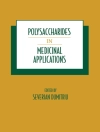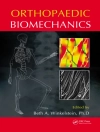The book covers various scenarios when errors, biases and systemic barriers prevail in emergency medicine, discusses their impact, and then offers solutions to mitigate their undesired outcomes. The process of clinical reasoning in emergency medicine is a complex exercise in cognition, judgment and problem-solving that is prone to mistakes. The book presents various cases written by a team of emergency specialists and trainees in an engaging format that is helpful for the practicing and teaching emergency doctor and trainees.
The book discusses 60 different types of biases and errors with clinical cases, and knowledge of strategies to mitigate them—a concept known as ‘cognitive debiasing’ that has the potential to reduce diagnostic error, and therefore, morbidity and mortality. It aims to help the readers during assessment of patients in the emergency department. Each chapter includes 4 cases illustrating the bias, error or barrier discussed, followed by a potential solution.
This book helps in polishing the thinking and behavior of the readers so to potentially enhance their clinical competence in emergency department.
Table of Content
Aggregate bias in emergency medicine.- Ambiguity effect in emergency medicine.- Anchoring bias in emergency medicine.- Ascertainment bias in emergency medicine.- Attentional bias in emergency medicine.- Availability bias in emergency medicine.- Bandwagon effect in emergency medicine.- Base-rate neglect in emergency medicine.- Belief bias in emergency medicine.- Blind spot bias in emergency medicine.- Commission bias in emergency medicine.- Confirmation bias in emergency medicine.- Congruence bias in emergency medicine.- Contrast effect in emergency medicine.- Déformation Professionnelle bias in emergency medicine.- Diagnosis momentum error in emergency medicine.- Ego bias in emergency medicine.- Expectation bias in emergency medicine.- Feedback sanction in emergency medicine.- Framing effect in emergency medicine.- Fundamental attribution error in emergency medicine.- Gambler’s fallacy in emergency medicine.- Gender bias in emergency medicine.- Hawthorne effect in emergency medicine.- Hindsight bias in emergency medicine.- Illusory correlation in emergency medicine.- Information bias in emergency medicine.- Multiple alternatives bias in emergency medicine.- Mere exposure effect in emergency medicine.- Need for closure bias in emergency medicine.- Omission bias in emergency medicine.- Order effect in emergency medicine.- Outcome bias in emergency medicine.- Overconfidence bias in emergency medicine.- Playing the odds bias in emergency medicine.- Posterior probability error in emergency medicine.- Premature closure bias in emergency medicine.- Psych-out error in emergency medicine.- Reactance bias in emergency medicine.- Representativeness restraint in emergency medicine.- Search satisfaction error in emergency medicine.- Self-serving bias in emergency medicine.- Semmelweis reflex in emergency medicine.- Sutton’s law and sutton’s slip in emergency medicine.- Sunk costs bias in emergency medicine.- Triage queuing error in emergency medicine.- Unpacking principle error in emergency medicine.- Vertical line failure in emergency medicine.- Visceral bias in emergency medicine.- Yin-Yang out error in emergency medicine.- Zebra retreat bias in emergency medicine.
About the author
Dr Manda Raz is an Australian doctor affiliated with Peninsula Health in Melbourne, with broad interest in academia, research and acute care medicine. He completed his MBBS from Monash University, Australia. Dr Raz is the recipient of several scholarships, awards and medals for his academic achievements and contribution to empirical research and clinical governance. He is also the author and editor of multiple books and reference works spanning a number of clinical, legal and administrative specialties.
Associate Professor Pourya Pouryahya, MD, FACEM, GC Clin Epi, CCPU, M Traumatology, MPH; is a Consultant Emergency Physician, Director of Emergency Medicine Research (DEMR), Monash Health, Casey hospital, Australia. A/Prof Pouryahya is a highly recognised Clinical Associate Professor at Monash University School of Clinical Sciences with double masters in traumatology and public health. He has specialinterests in trauma, sepsis and critical care, point of care ultrasound (Po CUS), biostatistics, and bias in medicine. A/Prof Pouryahya also serves as the co-chair of Monash Health fellowship teaching program and biannual Victorian fellowship practice exam, and leads the Monash Emergency-Monash Health sepsis and Casey Hospital-Monash Health emergency department ultrasound groups. He also serves on the Australasian College for Emergency Medicine (ACEM) court of examiners (COE), primary examination viva deputy chair, primary and fellowship exams standard setting panels.
